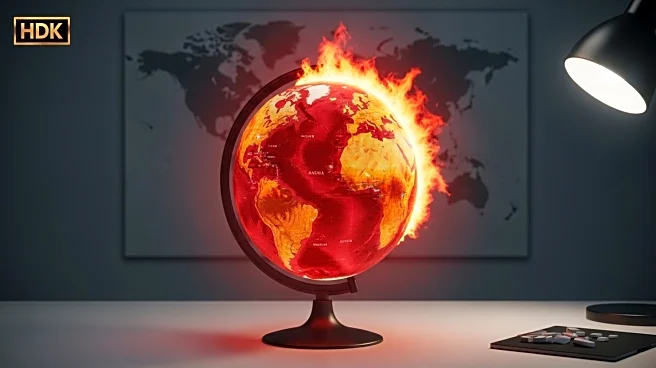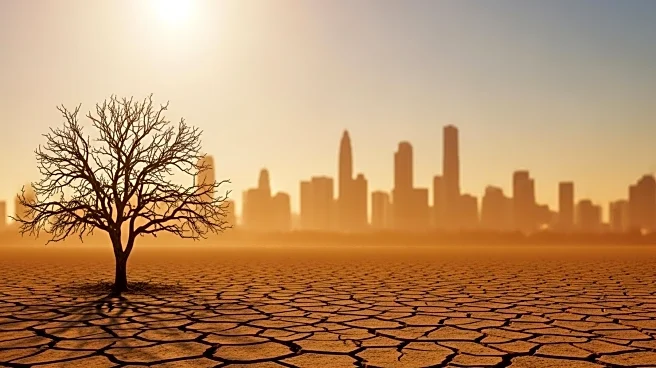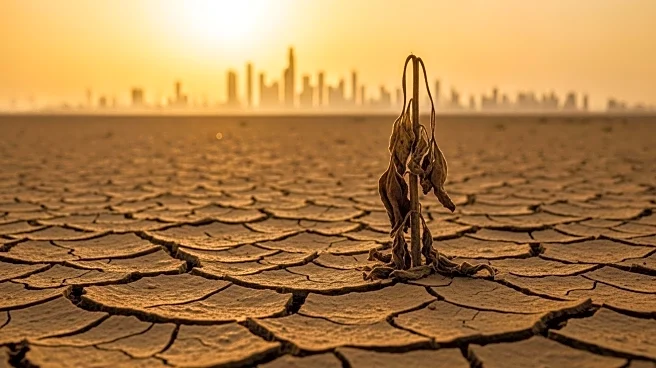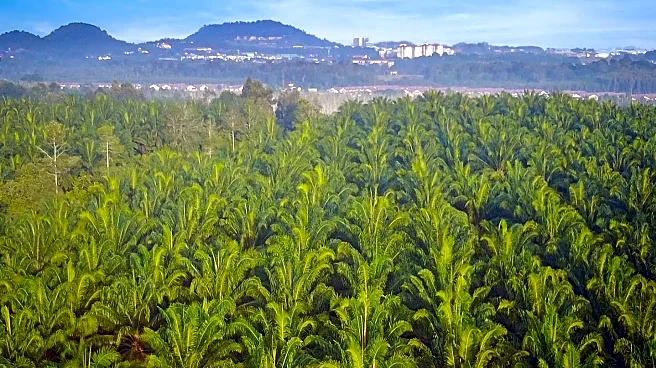What's Happening?
Recent research led by Dr. Calum Cunningham from the University of Tasmania highlights a significant increase in the frequency and severity of wildfires globally, attributed to climate change. The study, published in the journal Science, analyzed the 200 costliest wildfires from 1980 to 2023, revealing that 43% of these fires occurred in the last decade. The research indicates that rising temperatures and worsening weather conditions, driven by global heating, are creating more frequent and severe wildfires. The study also notes that half of the wildfires causing $1 billion or more in damages have occurred in the last ten years, with the frequency of fires causing ten or more deaths tripling over the analyzed period.
Why It's Important?
The findings underscore the urgent need for action to mitigate climate change and adapt to its impacts. Wildfires not only result in significant economic losses but also pose a severe threat to human life and health, as seen in the increased mortality rates from fire-related air pollution. The study suggests that current fire suppression efforts, despite increased spending, are insufficient to counteract the growing threat. This highlights the necessity for comprehensive strategies that include reducing greenhouse gas emissions and improving forest management near populated areas. The economic and social costs of wildfires are escalating, affecting communities and economies worldwide.
What's Next?
The study provides a roadmap for identifying regions at high risk of catastrophic wildfires, emphasizing the need for proactive measures in these areas. Policymakers and communities are urged to enhance fire prevention and management strategies, including better forest management and public education on fire safety. The research calls for a rapid reduction in greenhouse gas emissions to mitigate the underlying climate change factors contributing to the increased fire risk. As the frequency and severity of wildfires continue to rise, coordinated global efforts are essential to address this growing crisis.
Beyond the Headlines
The study also points to broader implications, such as the potential for increased displacement of populations living near high-risk fire zones and the long-term economic impacts on affected regions. The findings challenge climate skeptics by providing concrete evidence of the worsening trends in wildfire frequency and severity, reinforcing the scientific consensus on climate change's role in exacerbating natural disasters. This research may influence future policy decisions and funding allocations for climate adaptation and disaster preparedness.










